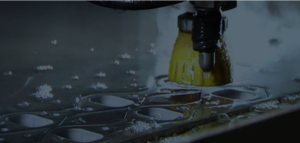Is this misunderstood method the best choice for your 2-axis metal cutoff?
Abrasive cutting is a much-misunderstood method of precision metal cutting. Due to its name, some potential users may assume that the method produces rough edges, a lot of burrs, and other surface defects.
Those assumptions could not be farther from the truth. In fact, abrasive cutting lends itself to applications requiring precision cutting, tight tolerances, and high volume at a moderate price.
But before you choose abrasive cutting — or any other precision metal cutting method you might be considering — for your 2-axis metal part cutoff, it is critical to understand the advantages and disadvantages of the process. That way, you can evaluate and decide whether the method will meet your needs and priorities.
How Abrasive Cutting Is Different
The primary difference between abrasive cutoff and many other, more familiar precision cutting methods is the way in which material is removed from the workpiece.
Rather than by cutting with saw teeth, abrasive cutting removes material through grinding and erosion. It accomplishes this by using a very thin, non-reinforced abrasive cutting wheel composed of countless sub-micron cutting particles particles embedded in a bonding material.
Unlike many cutting tools that get duller with each successive use, these abrasive wheels are self-dressing. That is, as the wheel cuts the material, the tiny, sharp abrasive particles are worn off, always exposing new ones and continuously presenting a fresh cutting edge.
The metal being cut does not load the wheel, which is what occurs with diamond wheels. The kerf is small — 0.012” to 0.020” (0.3 mm to 0.5 mm) — and burrs get pushed through the kerf and ejected.
Other Notable Advantages
In addition to cutting rods and extrusions, so-called thin-wheel abrasive cutting excels at tube cutting by allowing the use of mandrels, which support the tubes for precision cutoff. Abrasive cutting equipment can also cut dielectric materials. That means composites and coated metals can be cut without any compromise or limitations.
Abrasive cutoff works at much faster rates than precision metal cutting methods such as EDM and laser. Material can be bundled together, which becomes an extremely efficient advantage as diameters get smaller and the number of parts within a bundle increases. This allows the method to provide cost savings on high-volume requirements.
Even when cutting extremely hard materials, properly cooled thin-wheel abrasive cutoff generates little heat and produces a clean-cut surface finish. In addition, the method can:
- Provide cut length tolerances down to 0.001” (0.025 mm)
- Cut diameters from 0.0005” to 3.00” (0.0125 mm to 76.2 mm)
- Produce cut lengths as short as 0.008” (0.20 mm)
- Work with any tube ID — and cut tube walls as thin as 0.001” (0.025 mm) — without deformation
- Cut coated parts without damaging the coating
- Hold exceptionally tight tolerances on long-length cuts of ± 0.005” over 6.0’ (± 0.125 mm over 2 m)
- Produce the best “as cut” surface finish compared with all other cutting choices
A Few Disadvantages
Of course, no precision metal cutting method can do it all. Thin-wheel abrasive cutting is not recommended for large diameters — specifically, diameters greater than 1” (25.4 mm) for rods and greater than 3” (76.2 mm) for tubes.
While an abrasive cutting machine can be used with virtually all metals, the raw material must be in straight lengths. That means the abrasive method cannot be used for cutting material from a spool. In addition, as non-diamond wheels, abrasive wheels cannot cut carbides.
Your Choice!
Deciding whether thin-wheel abrasive cutting is indeed your best choice requires an in-depth understanding of your unique application and its specific parameters, as well as an understanding of the other options for 2-axis metal cutoff.
How does thin-wheel abrasive cutting compare with other precision metal cutting methods? Keep reading to find out.






